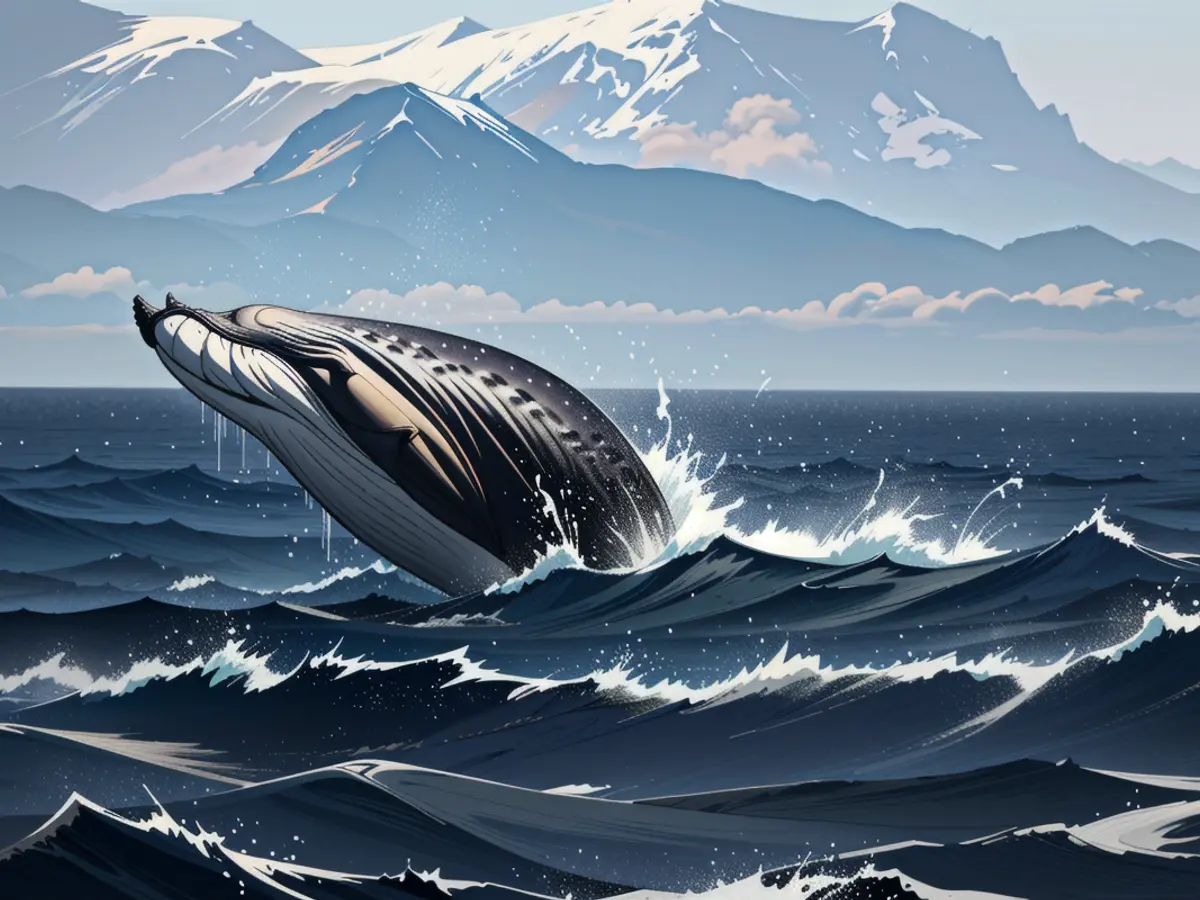This Giant Humpback Whale Breaks Migration Distance Record by Swimming an Impressive 8,000 Miles
In 2013, photographers captured the image of a humpback whale near the Colombian coast.Fast forward nine years and the very same whale was photographed in a remarkably distant location.A group of international scientists have identified this as one of the longest individual humpback whale migrations ever recorded.This intriguing discovery, published in a study on December 11 in the journal Royal Society Open Science, provides valuable insights into the species' intricate behavior and the environmental factors influencing such long-distance journeys.
The research team, including scientists from the Macuáticos Colombia Foundation, identified the whale as an adult male.He was initially photographed off the Colombian coast on July 10, 2013.Over eight long years, another researcher spotted the same whale in the Zanzibar channel, located between Tanzania and Zanzibar, on August 22, 2022.The two sightings were separated by a great-circle distance of approximately 8,106.4 miles (13,046 kilometers), potentially marking the longest-recorded distance a humpback whale has ever traversed, according to Ekaterina Kalashnikova of the Tanzania Cetaceans Program, who co-authored the study.
A great-circle distance represents the shortest distance between two points on a sphere, but the actual migration route for this individual remains uncertain, as the researchers noted in the study.It's plausible that the whale didn't swim straight across, so he likely covered a far greater distance.
Though humpback whales are renowned for their lengthy migrations, this specific journey is still noteworthy.Like many humpback whales, this one historically followed north-south migration patterns, usually visiting the same feeding and breeding grounds.However, this whale broke the mold by swapping breeding grounds and crossing multiple oceans to accomplish this, making him the first known humpback whale to switch breeding grounds from the Pacific to the Indian Ocean.Another notable exception is a female humpback whale who previously traveled 6,125 miles (9,800 kilometers) from the Brazilian coast to Madagascar.
“The atypical long-distance movement raises questions as to what could be driving it, with potential factors including but not limited to mating strategies,” the researchers wrote.In other words, the whale may have ventured on a trans-oceanic journey in search of mates or resources.
“When he arrived, was it like, ‘Oh, looks like the foreigner with the cool accent has arrived’?” quipped Ted Cheeseman of Southern Cross University, who co-authored the study, as reported by the Guardian.
The researchers suggested that potential reasons for this unusual migration include global climate change, altered environmental conditions, and shifts in krill distribution in the Southern Ocean.They hypothesized that an increase in humpback whale populations could be causing heightened competition for mates and resources, leading individuals to explore new, distant habitats for food and breeding.
The researchers attributed their ability to identify the record-breaking migration to photographs uploaded to Happywhale, a platform founded by Cheeseman where whale watchers can share images of their sightings.The platform employs automated image recognition software to recognize the unique patterns on the whales’ flukes (tails) in the images and identifies the individual whales.
This groundbreaking study offers valuable insights into the astonishing behaviors of a complex marine species, potentially providing insights into both humpback whales and their marine ecosystem.
The advancements in technology and image recognition software, such as the one used by Happywhale, have played a significant role in the future of marine research. Through these tools, scientists can study individual whale migrations over vast distances, shedding light on the complex behaviors of marine species and the environmental factors influencing them.
This unprecedented migration of the humpback whale across multiple oceans is a testament to the evolving relationship between science, technology, and the understanding of our planet's diverse marine life in the upcoming years.









